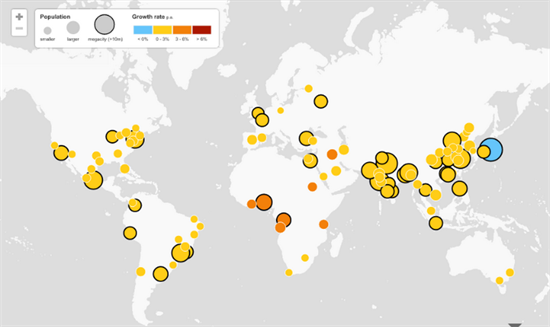This is the age of the megacity: urban areas with populations of
more than 10 million are on the rise. And as more and more people
flock to the city, rising temperatures and heatwaves are likely to
make life difficult in urban centres, scientists say.
Some highlights from this week's European Geosciences Union
(EGU) conference explain why cities are so vulnerable - and offer
suggestions for how citizens can ease the pressure.
Population explosion
By 2050, the global population is expected to
grow to 9.6 billion, up from one billion at the start of the
Industrial Revolution. Of the growing population, 75 per cent are
expected to live in cities.
Rapid population growth and urbanisation are having profound
impacts on our environment. As John Burrows, professor of
atmospheric physics and chemistry at the University of Bremen, told
journalists at the European Geosciences Union (EGU) conference this
morning:
"Humans are no longer a passenger on
this planet, we're driving it."
As more people are moving into cities, urban areas becoming more
crowded, and at the same time they're expanding outwards.
As this Guardian interactive
explains, 23 cities are currently classed as megacities,
including New York, Sao Paulo, Dakar and Tokyo. That means they
have a population of more than 10 million.
And that number is growing. By 2025, the United Nations predicts
there will be 37 in total.
 |
| United Nations research suggests there will be 37 megacities by 2025. Source: Guardian Interactive. |
People, buildings and industry are densely packed in cities. Heat gets trapped, meaning the ambient temperature is often higher than the immediate surroundings. This is known as the Urban Heat Island (UHI) effect, and scientists expect it to intensify as the climate warms further.
Not all towns and cities are the same. Research by Bin Zhou from the Potsdam Institute for Climate Research finds the summer UHI effect is closely related to the size of the city. But other factors such as the layout, how much vegetation exists and the proximity of the city to the sea (where breezes have a cooling effect) all affect how big the UHI is, other research suggests.
By Roz Pidcock
Read more @ The Carbon Brief
Nenhum comentário:
Postar um comentário